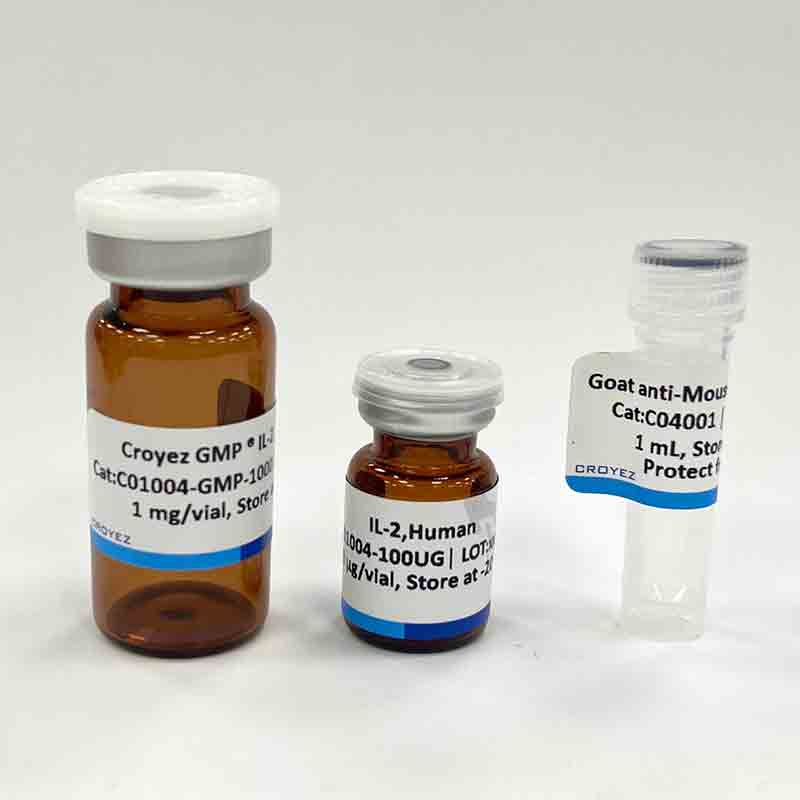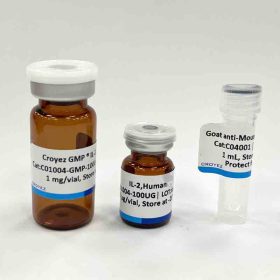IL-11 is a cytokine and first isolated in 1990 from bone marrow-derived fibrocyte-like stromal cells. It was initially thought to be important for hematopoiesis, notably for megakaryocyte maturation, but subsequently shown to be redundant for platelets, and for other blood cell types, in both mice and humans. It is also known under the names adipogenesis inhibitory factor (AGIF) and was developed as a recombinant protein (rhIL-11) as the drug substance oprelvekin.
Sequence:
PGPPPGPPRVSPDPRAELDSTVLLTRSLLADTRQLAAQLRDKFPADGDHNLDSLPTLAMSAGALGALQLPGVLTRLRADLLSYLRHVQWLRR
AGGSSLKTLEPELGTLQARLDRLLRRLQLLMSRLALPQPPPDPPAPPLAPPSSAWGGIRAAHAILGGLHLTLDWAVRGLLLLKTRL with polyhistidine tag at the N-terminus
Source:
Escherichia coli
Endotoxin Test:
<0.1 EU per 1 μg of the protein by the LAL method.
Activity:
Measure by its ability to induce T11 cells proliferation. The ED50 for this effect is <0.2 ng/mL. The specific activity of recombinant human IL-11 is approximately >1 x107 IU/mg.
Purity:
>98% as determined by SDS-PAGE. Ni-NTA chromatography
Formulation:
The protein was lyophilized from a solution containing 1X PBS, pH 8.0.
Reconstitution:
It is recommended to reconstitute the lyophilized protein in sterile H2O to a concentration not less than 100 μg/mL and incubate the stock solution for at least 20 min to ensure sufficient re-dissolved.
Storage:
Lyophilized protein should be stored at -20°C. Upon reconstitution, protein aliquots should be stored at -20°C or -80°C.
Note:
Please use within one month after protein reconstitution.





